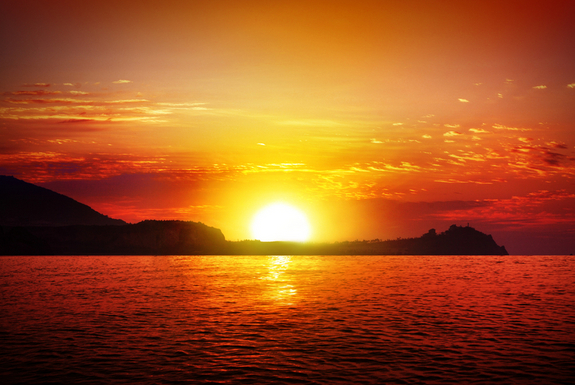The Fastest-Warming US State Is …

Some U.S. states are feeling the heat of climate change more than others, finds a new analysis of temperature increases over the past 100 years.
The state that saw the highest temperature increase was Rhode Island, followed by Massachusetts, New Jersey, Arizona and Maine.
Scientists from Climate Central, a research and public outreach organization, suggest natural climate variability along with atmospheric aerosols (that block incoming solar radiation) both play roles in the findings.
For each state in the continental U.S., scientists from Climate Central calculated averages of the daily high and low temperatures from National Climatic Data Center’s U.S. Historical Climatology Network of weather stations. Then, they determined how much the average daily temperatures changed each decade over the past 100 years.
The top 10 fastest-warming states in descending order:
- Rhode Island
- Massachusetts
- New Jersey
- Arizona
- Maine
- Connecticut
- Michigan
- Utah
- Minnesota
- Colorado
The 10 slowest-warming states:
- Alabama
- Georgia
- Arkansas
- Kentucky
- Mississippi
- Louisiana
- Tennessee
- South Carolina
- Missouri
- West Virginia
[See full list of U.S. states' warming trends]
Get the world’s most fascinating discoveries delivered straight to your inbox.
Overall, the scientists found that the pace of warming increased dramatically starting in the 1970s, with every state showing a rise in overall temperatures over the past 40 years. This bump coincides with the time when the effect of greenhouse gases began to overwhelm the other natural and human influences on climate at the global and continental scales, the researchers said.
So they split up their data into two groupings: from 1912 to the present and from 1970 to the present.
Over the past 100 years, the top 10 fastest warming states warmed 60 times faster than the bottom 10 states, or 0.26 degrees F (0.14 degrees C) per decade vs. 0.004 F (0.002 C) per decade.
Since 1970, the speed of warming across the lower 48 states more than tripled, increasing from 0.127 F (0.071 C) per decade over the 100-year period to 0.435 F (0.242 C) per decade since 1970. The gap between the fastest- and slowest-warming states also shrunk after 1970, with the top 10 states heating up twice as fast as the bottom 10 states.
Regional trends were also found, with states in the Southwest, Northeast, Upper Midwest and Northern Rockies showing the fastest warming, while states in the Southeast and Midwest regions tended to warm much slower.
This region of slow warming has been termed "the warming hole" by some; past research showed that aerosol pollutants emitted into the atmosphere over the past 60 years from industrial and power plants in the eastern U.S. would create a cooling pattern similar to this warming hole. Natural climate variability may also play a role in this warming hole, the researchers noted.
Follow LiveScience on Twitter @livescience. We're also on Facebook & Google+.
Jeanna Bryner is managing editor of Scientific American. Previously she was editor in chief of Live Science and, prior to that, an editor at Scholastic's Science World magazine. Bryner has an English degree from Salisbury University, a master's degree in biogeochemistry and environmental sciences from the University of Maryland and a graduate science journalism degree from New York University. She has worked as a biologist in Florida, where she monitored wetlands and did field surveys for endangered species, including the gorgeous Florida Scrub Jay. She also received an ocean sciences journalism fellowship from the Woods Hole Oceanographic Institution. She is a firm believer that science is for everyone and that just about everything can be viewed through the lens of science.


